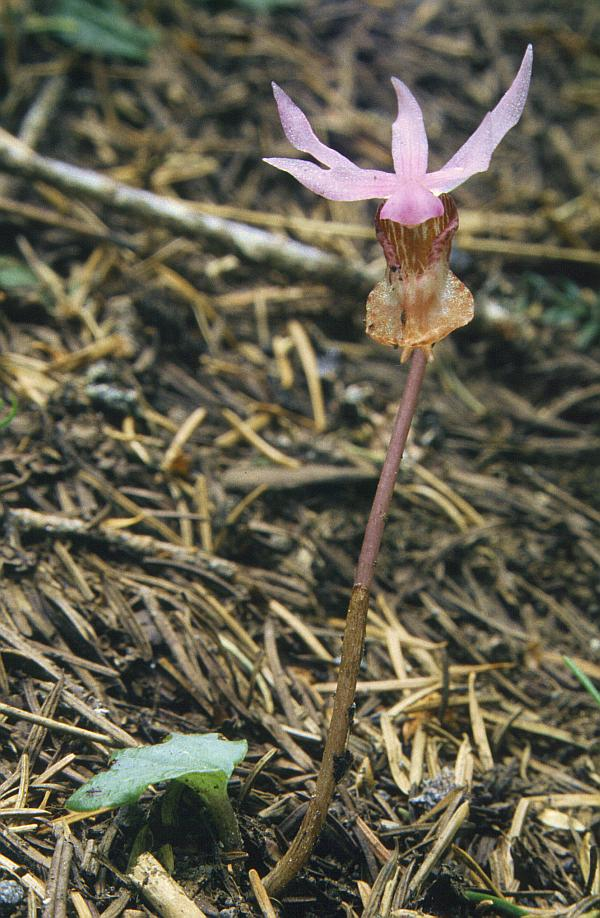Plant Data Sheet

Fairy Slipper, Calypso bulbosa
Range
Nearly circles theglobe in the northern hemisphere,
ranging throughout North America, Europe, and Asia. In North America,calypso is
found from Labrador to Alaska, south to NewEngland, Minnesota, the Great Plains,
Arizona, and along the west coast to California.
Climate, elevation
?
Local occurrence (where, how
common)
The western form seems to be more aggressive, growing in
denser colonies,
and has been successfully cultivated for one to two
years when carefully tended (Case 1964).
Habitat preferences
An inhabitant of moist coniferous forests with cool
soils. When found in boggy areas,
it
inhabits drier hummocks or the bases of old trees or
stumps. It is nearly always in the shade, Caljouw (1981) found it under canopy
covers of no less than 60% and in soils no warmer than 15°
C.
Plant strategy type/successional stage (stress-tolerator, competitor, weedy/colonizer, seral, late successional)
?
Associated species
Of the Orchidaceae family, may see
resemblance to species of
Cypripedium.
May be collected as: (seed,
layered, divisions, etc.)
Seed. Needs a certain mycorrhizal fungus in the soil in order
to grow, and will only be found where this particular fungus is available.seeds
are very small, and contain few nutrients. This makes it virtually impossible to
transplant.
Collection restrictions or
guidelines
Due to its rarity and extremely small size, calypso
orchid is notoriously difficult to find. Although its tiny, basal evergreen leaf
could potentially be recognized and found with extremely diligent searching. In
all practicality one is limited to collecting when the showy flower is present.
This survey window varies depending upon the location and specific weather conditions, but is usually from late May
through early June, varying according to locality and latitude. The western form
seems to be more aggressive, growing in denser colonies, and has been
successfully cultivated for one to two years when carefully tended (Case
1964).
Seed germination (needs dormancy
breaking?)
?
Seed life (can be stored, short shelf-life,
long shelf-life)
?
Recommended seed storage
conditions
?
Soil or medium requirements
(inoculum necessary?)
Enjoys rich, moist soil enriched with leaf mold or bark chips in a
neutral to acid soil in partial shade.
(The Plant Database website)
According to Alec Pridgeons book "The Illustrated Encyclopedia of
Orchids", it needs open mix of leaf mold with crushed quartzite grit or,
alernatively, living Sphagnum moss to survive (The orchid growing
website)
Installation form (form, potential for
successful outcomes, cost)
Divide corms very carefully to propigate.
Recommended planting
density
24-36 in. (60-90 cm) (The Plant Database)
Care requirements after installed (water
weekly, water once etc.)
Average
Water Needs; Water regularly; do not overwater.
Conservation of nearby
bee populations could promote fertilization and seed-set. In frost prone areas grow in a cold shaded greenhouse. (The Plant Database
website)
Normal rate of growth or spread;
lifespan
?
Sources cited
http://www.botany.wisc.edu/Orchids/Calypso.html
accessed
The orchid growing website http://www.geocities.com/orkoti/calypsoe.html accessed
Case, F.W., Jr. 1964. Orchids of the Great Lakes
Region.
Cranbrook Inst. Sci. Bull. 48. Bloomfield Hills,
MI.
Data compiled by
Roger Whalley